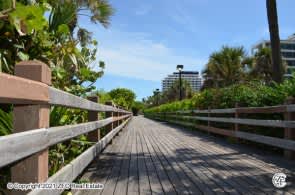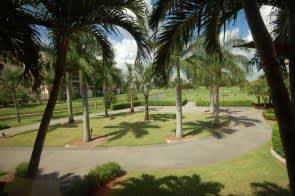The best five Country Club (CC) opportunities in South Florida
A Resident-Mandatory-Membership CC (RMCC) - WhatŌĆÖs that all about?┬Ā
In short, most CCs emerged with mandatory residence as a rule. An RMCC front and center theme states in no uncertain terms, "This CC is for the exclusive use of our campus homeowners only." In other words, you must buy a home on campus to join our club.
RMCCs up and down the Florida coast offer luxury amenities and luxuries to condo, townhouse, villa, patio-home, and SF estate residents living on an expansive, defined campus. Ongoing renovations and reconstructions have taken these to mind-boggling levels never imagined when they first emerged. For example:┬Ā
┬Ā
- Luxury restaurants (five or six offering everything from casual smoothies and bagels to the finest dining steakhouses and fish eateries) are a standard feature.┬Ā
- Another signature mainstay is offering one, two, or even three championship golf courses (with driving, chipping, and putting practice facilities). The latter embrace rolling, undulating, vivid green-grass fairways, which homes look out over to take in phenomenal water, tropical foliage vistas, and a wildlife passing parade that's second to none. And that's not the half of it.
- Buy a home in one of these RMCCs, and the club management promises you a fitness center that health fanatics will drool over with high-tech equipment, dedicated exercise studios, personal trainers at one's beck and call, saunas, steam baths, showers, and locker rooms.┬Ā
- Then, attached to the latter facility are 40,000 square foot spas with every aromatic leisure and relaxation therapeutic treatment (under trained specialists) you can think of. From there, walk out to three (often four) heated and aquatic training facilities surrounded by massive sundecks, adult-only sections, and kiddies' splash-play areas.┬Ā
- Regarding the children, RMCCs have constructed youth activity centers catering to ages two to twenty-four with supervision where required. Moreover, the manicured gardens throughout the multi-hundred-acre real estate footprint, patrolled by a professional security unit (also at the entrances with closed circuit surveillance), is a given.┬Ā
- Finally, tennis and pickleball centers with dedicated food services provide twenty or more courts, with basketball, volleyball, bocce, and racquetball almost always in the programs. Oh, and in all the above, there are leagues, tournaments, instruction (group and individual), physical therapy, valet & concierge services - you name it.
The Mandatory Membership Drawbacks
┬Ā
The picture painted above (although in pre-2000, a little less elaborate) was a massive attraction for snowbirds, locals, and retirees who tripped over themselves to connect to the CC culture with friends from home cities with RMCC luxury at their beck and call. But of course, that's not the drawback we're referring to; it's the cost of living on their campuses. Consider the following:
┬Ā
Every Manadtory Membership Community requires its members to pay:
┬Ā
- An initiation fee (IF) of between $100,000 and $200,000 (applicable to new members, most of it non-refundable).
- For full-golf privileges (plus all other amenities), anything from $1,800 to $3,500 monthly in 2023 (including special assessments every time the renovations or restructuring occurs, which is frequent.)┬Ā
┬Ā
Notably, (1) & (2) above excludes the HOA fee charged to campus residents, which can also range from $500 to $2,500 monthly. So, for example, buying a condo on an RMCC for (say) $400,000 may effectively be $550,000 (including the IF), with most of $150,000 written off before you step through your new residence's door. That's a massive percentage of the asset value and a significant MLS deterrent.┬Ā
┬Ā
Looking back pre-2000, people entered the RMCCs when IFs and annual dues kicked off at 50% less than current levels and were often eighty percent refundable on selling. They loved the idea, attracted to the exclusivity, privacy, prestige, and unsurpassed luxury built into the formula. That, in many situations, faded, sometimes rapidly. Why? Because members got old, sickly, or could no longer afford the eye-popping rising and extra fees with every reconstruction that kept coming at them (and unanticipated when they bought). Like what? For example:
┬Ā
- Mandatory eating at the clubhouse for $2,000 annually.
- Reconfiguring golf course layouts every four years or so for millions of dollars.
- Knocking down a beautiful pool area, fitness center, and spa, turning it into a car park, and building a new $40 million life and fitness center next to it, four times the size.┬Ā
- Adding more courts and activities than ever before.
- Remodeling entire clubhouse furnishings.
┬Ā
As described above, the project scenario is not unique or a CC one-off. Addison Reserve, Polo Club, St Andrews, Broken Sound, and Woodfield Country Club all demonstrate radical reconstruction programs since 2017. In many cases, special assessments come down the pipeline to add to the monetary pain.
┬Ā
The obvious management response is, "If you don't like the system any longer, sell the home and move on." Sounds fair enough, but not so easy for the MF-type homes especially - disrupted by a powerful dynamic that has thrown a juggernaut into the RMCC category
An Mandatory Membership shift of note
┬Ā
Many RMCCs initiated between the 1950s and 2000 offered primarily affordable townhomes and condo units selling for between $100,000 and $400,000. Thus, many homeowners entered the CC lifestyle more with unrealistic visions than the wealth to back up the maintenance. As things progressed, newer communities embraced more expensive SF residences mixed in with MF. Finally, a minority decided to go with only SF houses (i.e., St Andrews, Addison Reserve, and Mizner Country Club).
┬Ā
Thus, disgruntled RMCC MF residents face a brick wall to sell at reasonable prices to put the CC obligations in the rearview mirror. Why? Because prospective buyers refuse to lose an average of $100,000 IF add-on out of the gate (a huge MLS obstacle) on top of forking out the eye-popping $3000+ monthly dues. Of course, buyers paying over $1 million for estate SF estates are significantly less sensitive than tiny, rickety residences needing significant remodeling. So, droves of RMCC members, no longer playing golf or wanting CC luxuries, were stuck with the fees, with no viable MLS exit delivering fair market value.┬Ā┬Ā
┬Ā
As a result, here's what happened at various times since CC developments caught traction:
- Some CC residents (represented by their HOAs) fought tooth and nail to separate from the RMCC formats. Most were early vintage SF house- (less than 2000 square feet UA), condo-, and townhouse-dominant communities. It was a bumpy, mired-in-conflict road, but in the end, many succeeded in selling off the golf course, clubhouse, and surrounding amenities to:
- Private golf course management entities that specialized in external membership programs. Real estate developers who converted fairways into lots to build houses.
- Thus, non-mandatory CCs arose, accepting that homeowners could:
- Live in residence as before on the fairways, water features, and putting greens without concern about CC protocols or extra fees.
- Enjoy the spacious nature-centric theme of a CC plus the security - without access to the CC facilities (although the latter was on their doorstep).┬Ā
- In most cases, join the NECC under separate arrangements.
┬Ā
Another name for these opportunities is non-equity CCs (NECC). If you think these were exceptions to the rule, think again. Consider the following list that followed the RMCC shift described above:
- Boca Raton - Boca Pointe, Boca Country Club, and Boca Greens
- Delray Beach - Polo Trace (sold the entire CC to developer GL Homes.
- Boynton Beach - Westchester CC and Indian Spring
- Parkland - Parkland Golf & Country Club
- Lake Worth - Winston Trails and The Fountains
- West Palm Beach - Breakers West, Bear Lakes Estates, Emerald Dunes, and Lands of the President (a massive complex of several subdivisions).
- Jupiter - Jupiter Hills Club, Jupiter Dunes, Trump National, The Estuary, Turtle Creek, and Jupiter Country Club.
┬Ā
Please appreciate that the NECCs above compete in every respect with their RMCC cousins in terms of amenities the committed members expect. So, as mentioned above, you can buy on the campus without tying your home to membership in any shape or form, except sharing in perhaps security and ground maintenance (by agreement with the NECC). Indeed, the latter becomes part of one's HOA fees, around thirty percent of CC annual costs, as described above.┬Ā
In short, if you live on an NECC campus and join separately, you're effectively in the same position as a resident in an RMCC, except your home-selling transactions will have no CC connections or IF implications.
┬Ā
Here's where it got severely problematic - Thousands of MF homeowners wanted out but didn't have enough votes to erase the RMCC protocols. It happens predominantly where SF estate homes are in the mix providing substantial resistance to such initiatives. As a result, MLS mayhem and confusion broke loose:┬Ā
┬Ā
- We refer you to our write-up on Boca West, where we noted: "a West Palm TV report of March 2019 reflecting that 58 early vintage units sold at the time for between $1 and $5,000 (NOTE - not per square foot - absolute dollar closed deals)."┬Ā
- Indeed, "Condominium owners looking for release from annual commitments were practically donating units to willing buyers ready to fork out the $70,000 non-refundable initiation fee (in 2018/19 - since raised).┬Ā
- To confound things even more, while this unfolded, "a sky home in the super-luxury 2019 new construction tower Akoya on the West Boca campus closed at $3.8 million - $984 per square foot (UA)." Moreover, "numerous SF homesŌĆ” sold between $350 and $450 a square foot (UA)."┬Ā
┬Ā
The good news is that in 2023, you can buy a beautifully renovated early-vintage MF unit in Boca West (from the buyers who snapped them up in 2018/19) for $250 a square foot - a fantastic price for CC fans who can enter a luxury unit on an equal footing to residents in expensive estates and modern condos on the same campus. An unrenovated MF in 2023 goes for $90 a square foot. We noted similar dichotomies in Broken Sound, Polo Club, and Woodfield CC, where MF and SF are in the mix.┬Ā┬Ā
The best five opportunities in South Florida CCs in 2023 for the foreseeable future.
┬Ā
- Our #1 recommendation is to consider NECCs, where you can enter membership without complications around your residence, especially if you want to remain a member after you sell. In other words, residence ownership and CC membership are independent decisions.
- Number Two - Buy a bargain basement MF home (impressively renovated) that more or less compensates for the non-refundable IF.
- Third Preference - Acquire a SF estate home in an MRCC comfortably above $1 million, thus diminishing the IF impact.
- Finally, review RCMMs offering significantly better IF terms and lower annual dues, our favorites being Gleneagles (Delray Beach) and Boynton Beach's Aberdeen Country Club, Hunters Run, and Quail Ridge.
┬Ā
We assume interested prospective buyers (as per above) view private golf privileges (preferably on campus or nearby) as a must-have. However, for those people who want CC amenities excluding on-campus golf, restaurants, and valet services (but everything else mentioned above), consider:
┬Ā
- Stunning modern/contemporary resort-style SF estates:
- Starting at $1.7 million in Royal Palm Polo, Boca Bridges, Seven Bridges, and Lotus
- Developed by GL Homes and Toll Brothers for only HOA fees payable of +- $1,000 monthly and no IFs.
┬Ā
So there you have our five prime opportunity observations with in-depth evaluation. So contact the ZFC team today. We guarantee you a rewarding, no-hassle journey to your dream home within budget and accounting for all aspects so they don't come back to bite you in the future.
More from this category
10 Amazing Things to Do in Fort Lauderdale
74 0 Zev Freidus 4 years ago in Lifestyle
Broken Sound Club's $40 million renovation
451 0 Zev Freidus 3 years ago in Lifestyle
The Best Things to Do While Living in Wellington, FL
174 0 Danielle Peck 4 years ago in Lifestyle
Activities, Attractions, and Things to Do in Boca Raton
169 0 Danielle Peck 4 years ago in Lifestyle




